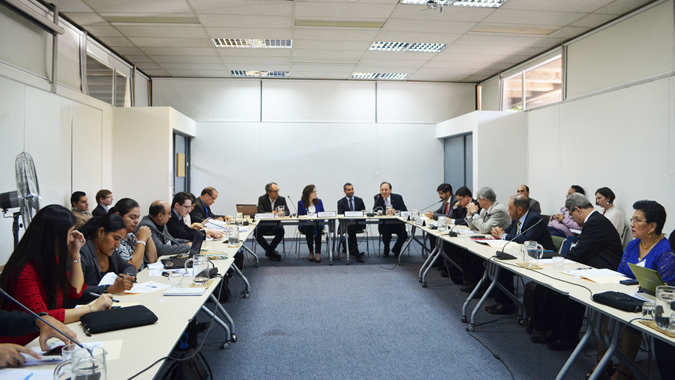Infrastructure Investment in Latin American and Caribbean Countries Remains Below the Needs of the Region
Work area(s)
Topic(s)
Investments should total around 6.2% of GDP but by 2015 the amount was only 2.3%, according to the INFRALATAM database.

Latin American and Caribbean countries should invest around 6.2% of their annual Gross Domestic Product (GDP) to meet their infrastructure needs, but according to recent figures (2015) released by ECLAC, investment only amounts to 2.3% of GDP.
According to the INFRALATAM database, which brings together data on the economic infrastructure investments being made by the region’s countries, 1.5% of these capital inflows around 2015 corresponded to the public sector while the remaining 0.8% came from the private sector. Furthermore, it can be seen that the amount of investment as a proportion of GDP did not increase over the course of the 2008-2015 period and remains far below the level recommended by ECLAC.
According to the database – which is the product of a cooperation initiative between the Economic Commission for Latin America and the Caribbean (ECLAC), the CAF–Development Bank of Latin America and the Inter-American Development Bank (IDB) to measure and promote the analysis of infrastructure investments in the region’s countries – the majority of them are concentrated in the transportation sector, which accounts for more than 50%, followed by the energy sector, with around 25%. The economies included in this average represent around 72% of regional GDP.
Originally launched on August 30, 2016 with annual data from 2008 onward regarding investments by both the public and private sectors aimed at acquiring economic infrastructure assets (water and sanitation, flood defenses, energy, irrigation, telecommunications and transportation), the latest version of INFRALATAM published in May 2017 has a new format, broadens its coverage to include four more countries and updates figures to 2015. As a result, the tool now has updated infrastructure investment data for 18 countries in Latin America and the Caribbean: Argentina, Belize, Bolivia, Brazil, Chile, Colombia, Costa Rica, the Dominican Republic, El Salvador, Guatemala, Guyana, Honduras, Mexico, Nicaragua, Panama, Paraguay, Peru, and Trinidad and Tobago.
The initiative’s objective is to offer reliable data for supporting the design and implementation of infrastructure policies by the bodies responsible for public policy and planning in Latin American and Caribbean countries, as well as for numerous public, private and international actors, such as private investors, scholars, builders, civil society organizations and others.
Since launching in 2016, INFRALATAM has become an important tool for consultation on the issue of infrastructure investment in the region for the analytical work and decision-making of countries and governments in the region, as well as for regional and global bodies, such as the World Bank, the International Monetary Fund, Oxford Analytica and specialized media.
Related content

Expertos recalcan la importancia de mejorar la medición de la inversión en infraestructura en América Latina y el Caribe
Encuentro realizado en la CEPAL en el marco de la Semana de la Gobernanza de los Recursos Naturales y la Infraestructura reunió a representantes de 11 países de la región.

ECLAC, CAF and IDB Launch Database on Infrastructure Investments in Latin America and the Caribbean
INFRALATAM presents figures from 15 of the region’s countries for the 2008-2013 period.
Contact
Public Information Unit
- prensa@cepal.org
- (56 2) 2210 2040